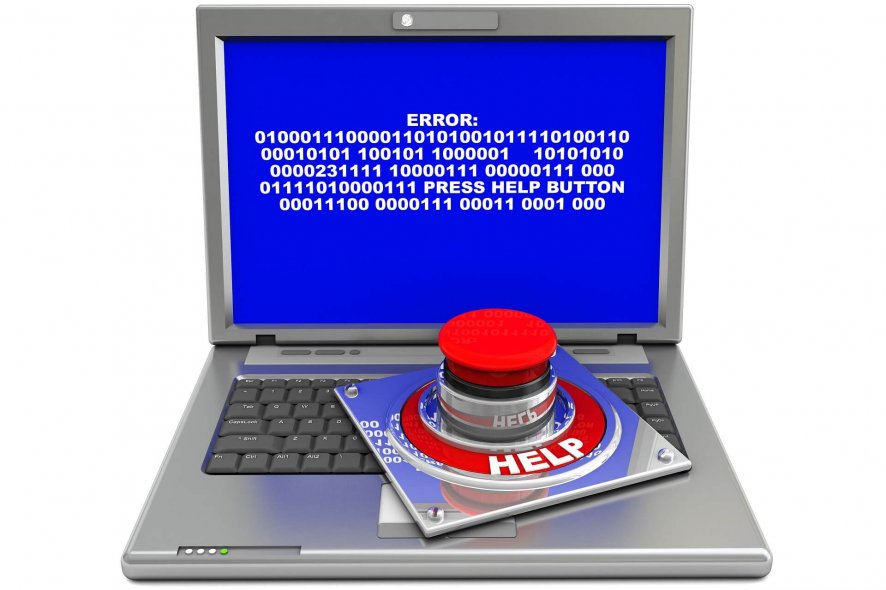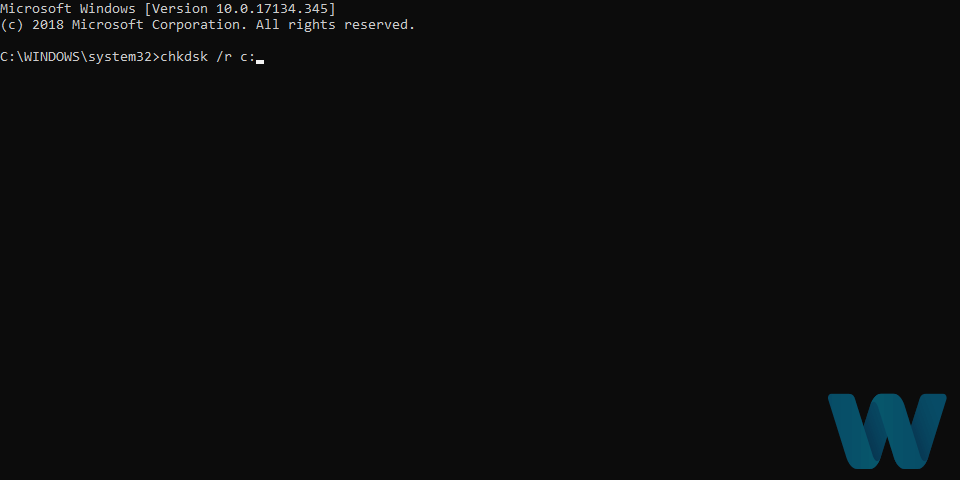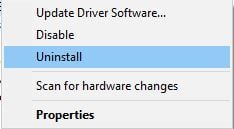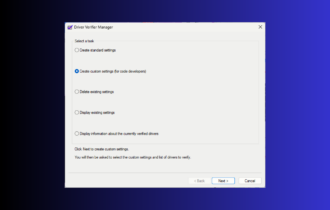Error 0x00000006 INVALID PROCESS DETACH ATTEMPT [FULL FIX]
9 min. read
Updated on
Read our disclosure page to find out how can you help Windows Report sustain the editorial team Read more
Key notes
- Like many Windows Blue Screens, the INVALID_PROCESS_DETACH_ATTEMPT 0x00000006 error shows when an internal critical operation was mishandled and the system stopped all activity to protect the computer.
- This is usually caused by a software bug. Fix this by checking the latest software that was installed and recent driver updates that were made.

Blue Screen of Death is one of more serious problems on every version of Windows since it’s usually caused by a problematic driver or software, or in worst case scenario, a faulty hardware.
INVALID PROCESS DETACH ATTEMPT error can appear on almost any version of Windows, and Windows 10 is no exception, but fortunately, there are few ways to fix this problem.
How to fix INVALID PROCESS DETACH ATTEMPT error
Steps to fix INVALID PROCESS DETACH ATTEMPT error
1. Make sure that Windows 10 is updated
BSoD errors can be caused by a hardware incompatibility, and in order to avoid this issue, users are advising to keep your Windows 10 up to date. If Microsoft is aware of this issue, it will probably be fixed in one of the upcoming updates, so make sure to update Windows 10 regularly.
2. Update your graphics card driver
Number of users reported that this issue is caused by an outdated graphic card driver. If your graphic card driver isn’t compatible with Windows 10, we strongly advise you to update it. To update your graphic card driver you just need to visit your graphic card manufacturer’s website and download the latest driver for your graphic card.
2.1 Update drivers automatically
Searching for drivers on your own can be time-consuming. So, we advise you to use a tool that will do this for you automatically. Using an automatic driver updater will certainly save you from the hassle of searching for drivers manually, and it will always keep your system up to date with the latest drivers.
A dedicated tool will help you update drivers automatically and prevent PC damage caused by installing the wrong driver versions. After several tests, our team concluded that this is the best-automatized solution.
It scans your PC and detects all driver-related issues, be it outdated, corrupt or missing drivers. It automatically fixes them and you can set it up to regularly check your drivers and never worry about this again.
3. Run the BSOD Troubleshooter
If updating your system and drivers didn’t get the job done, let’s try a few troubleshooting tools. The first tool we’re going to use is Windows 10’s built-in troubleshooter. This tool can help you resolve all sorts of issues, including the BSOD problems.
Here’s how to run Windows 10’s built-in troubleshooting tool:
- Go to the Settings app
- Head over to the Update & Security section.
- Select Troubleshoot from the menu on the left.
- Select BSOD from the right pane and click Run the troubleshooter.
- Follow the instructions on the screen to complete the troubleshooter.
4. Run the SFC scan
The SFC scan is a command line tool that scans your computer for potential issues, and resolves them (if the solution is possible). Therefore, the SFC scan can be helpful when dealing with problems like the INVALID PROCESS DETACH ATTEMPT error.
Here’s how to run the SFC scan in Windows 10:
- Right-click the Start Menu button, and open Command Prompt (Admin).
- Enter the following line and press Enter: sfc/scannow
- Wait until the process is done (it may take a while).
- The tool will automatically apply the solution, if possible.
- Restart your computer.
5. Run DISM
The third troubleshooting tool we’re going to try here is DISM. Deployment Image Servicing and Management (DISM) reloads the system image, and resolves potential issues on the way. So, it might be helpful when dealing with the INVALID PROCESS DETACH ATTEMPT error.
We’ll walk you through both standard and the procedure that utilizes the installation media below:
- Standard way
- Right-click Start and open Command Prompt (Admin).
- Paste the following command and press Enter:
- Wait until the scan is finished.
- Restart your computer and try updating again.
- With the Windows installation media
- Insert your Windows installation media.
- Right-click the Start menu and, from the menu, choose the Command Prompt (Admin).
- In the command line, type the following commands and press Enter after each:
- dism /online /cleanup-image /scanhealth
- dism /online /cleanup-image /restorehealth
- Now, type the following command and press Enter:
- DISM /Online /Cleanup-Image /RestoreHealth /source:WIM:X:SourcesInstall.wim:1 /LimitAccess
- Make sure to change an X value with the letter of the mounted drive with Windows 10 installation.
- After the procedure is finished, restart your computer.
6. Check the hard drive
If there’s a problem with your hard disk or partition, BSOD issues are more than possible. To eliminate that possibility, we’re going to run a hard disk check tool, to make sure everything related to your partition is in its place.
Here’s how to check the hard drive in Windows 10:
- Enter the Advanced Startup (Restart your computer while holding the Shift key).
- Choose Troubleshoot > Advanced Options.
- Select Command Prompt from the list of options.
- When Command Prompt appears, enter the following lines and press Enter after each line in order to run it:
- Some users are also suggesting that you need to run additional chkdsk commands as well. To perform these commands, you need to know drive letters for all your hard drive partitions. In Command Prompt you should enter the following (but remember to use the letters that match your hard drive partitions on your PC):
- Restart your computer and check if the issue is resolved.
7. Reinstall Office
Few users reported INVALID PROCESS DETACH ATTEMPT while using certain older versions of Microsoft Office. If you are using an older version of Office, make sure to completely remove it from your PC. After removing Office, you need to disable your antivirus software and reinstall Office again. This is just a potential solution, but it worked for few users, so you might want to try it out.
8. Uninstall your antivirus software
In certain cases, antivirus software can cause INVALID PROCESS DETACH ATTEMPT to appear, and in order to fix this error you’ll have to temporarily uninstall your antivirus software. Tools such as Norton, AVG, Avast or even Malwarebytes can cause a BSoD error to appear.
Even if you don’t use any of these tools for system protection, you should know that almost any antivirus can cause this issue to appear, therefore it’s advised to remove your current antivirus.
If the issue persists even after you removed the antivirus software, maybe few of its files or registry entries remained in your computer. To completely remove a certain antivirus software, it’s advised to use an uninstaller tool, and many antivirus companies offer these tools for download, so make sure to get one for your antivirus software.
After you remove your antivirus, you can try reinstalling the updated version or you can download one of the best antivirus programs and use it instead.
⇒ Get ESET HOME Security Essential
9. Enter Safe Mode
If your computer constantly restarts while giving you INVALID PROCESS DETACH ATTEMPT error, you should try entering the Safe Mode. Safe Mode uses only limited software and drivers in order to run, and by entering Safe Mode you can find if a problem is related to your software. To enter Safe Mode, do the following:
- While your computer boots, restart it. Repeat this process 3 or 4 times. This should start Automatic Repair.
- Choose Troubleshoot > Advanced options > Startup settings. Click the Restart button.
- When your computer restarts, you should see a list of options available. Press 5 of F5 to select Safe Mode with Networking.
Try using your PC in Safe Mode for a while to see if the INVALID PROCESS DETACH ATTEMPT error appears. If the problem doesn’t manifest, it’s probably caused by a certain software or a driver, and you’re advised to find and uninstall the problematic software.
As we previously mentioned, antivirus can cause this BSoD error, but at the same time, this issue can be caused by almost any other software. If the blue screen error started appearing recently, make sure to remove any software that you installed in past few days or weeks.
In some cases, certain driver can cause a BSoD error, and you’re advised to find the problematic driver and remove it. Removing an installed driver is simple, and you can do it by following these steps:
- Open Power User Menu by pressing Windows Key + X and select Device Manager from the list.
- Locate the problematic driver, right click it, and choose Uninstall from the menu.
10. Check your hardware
BSoD errors are often caused by a faulty hardware, most commonly RAM, so if you’re having INVALID PROCESS DETACH ATTEMPT error, we advise you to use MemTest86+ and check if your RAM is working properly. In addition to RAM, this issue can be caused by any other hardware component or even by a newly installed hardware.
Sometimes your new RAM, graphic card or even wireless adapter might not be fully compatible with your motherboard and that can cause this error to appear. If you installed any new components recently, we advise you to replace them with previous components to see if the issue still persists.
11. Perform System Restore or reset your PC
If all other solutions don’t work, you can try performing a System Restore. To perform a System Restore you need to do the following:
- While your PC boots, restart it few times. This should start Automatic Recovery.
- Choose Troubleshoot > Advanced options > System Restore.
- Select your user name and enter your password.
- Follow the instructions and select a system restore point you wish to restore to. Click Next and follow the instructions.
If System Restore doesn’t work for you, you can always reset your PC. To do that, do the following:
- Start the Automatic Recovery by restarting your computer few times while it boots.
- Choose Troubleshoot > Reset this PC.
- You can choose between Keep my files and Remove everything. In our experience, sometimes it’s better to use Remove everything option, since that options works similarly to clean install. If you choose Remove everything remember to choose Only the drive where Windows is installed > Just remove my files. By using this option all files and folders from your C drive will be removed, so make sure that you back them up.
INVALID_PROCESS_DETACH_ATTEMPT BSoD error can be troublesome and sometimes hard to fix, but we hope that some of our solutions were helpful to you.















